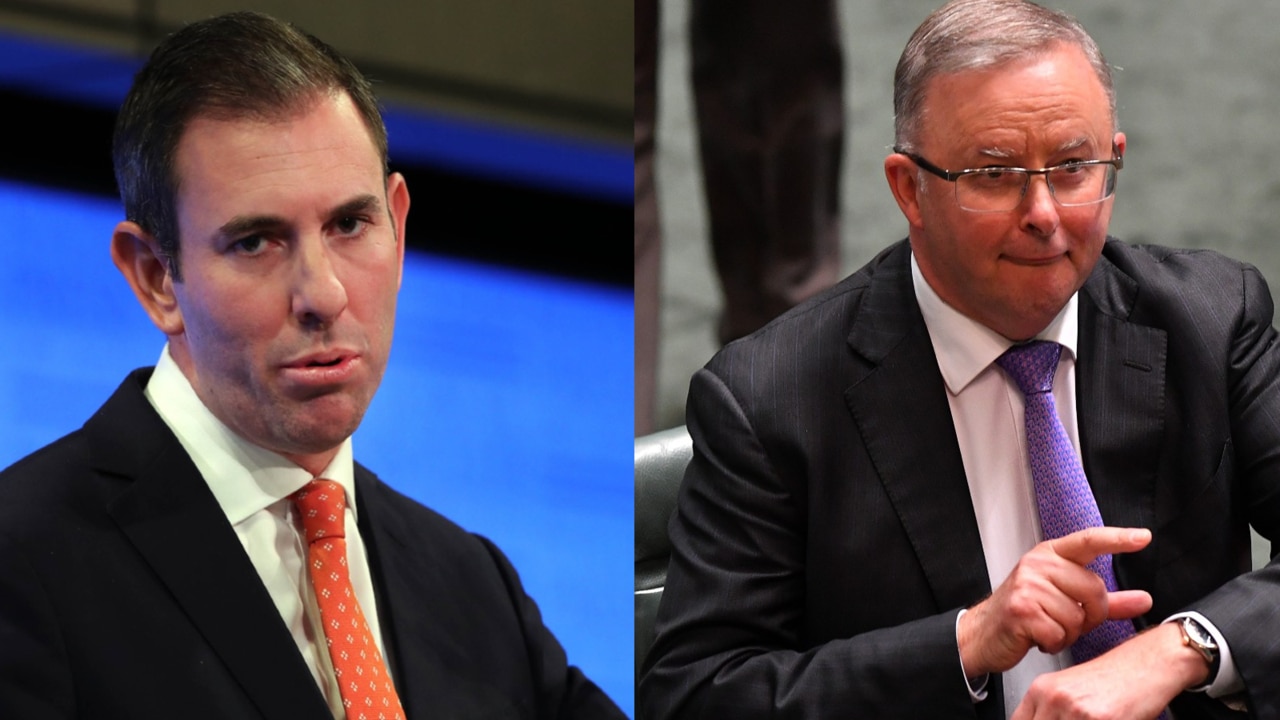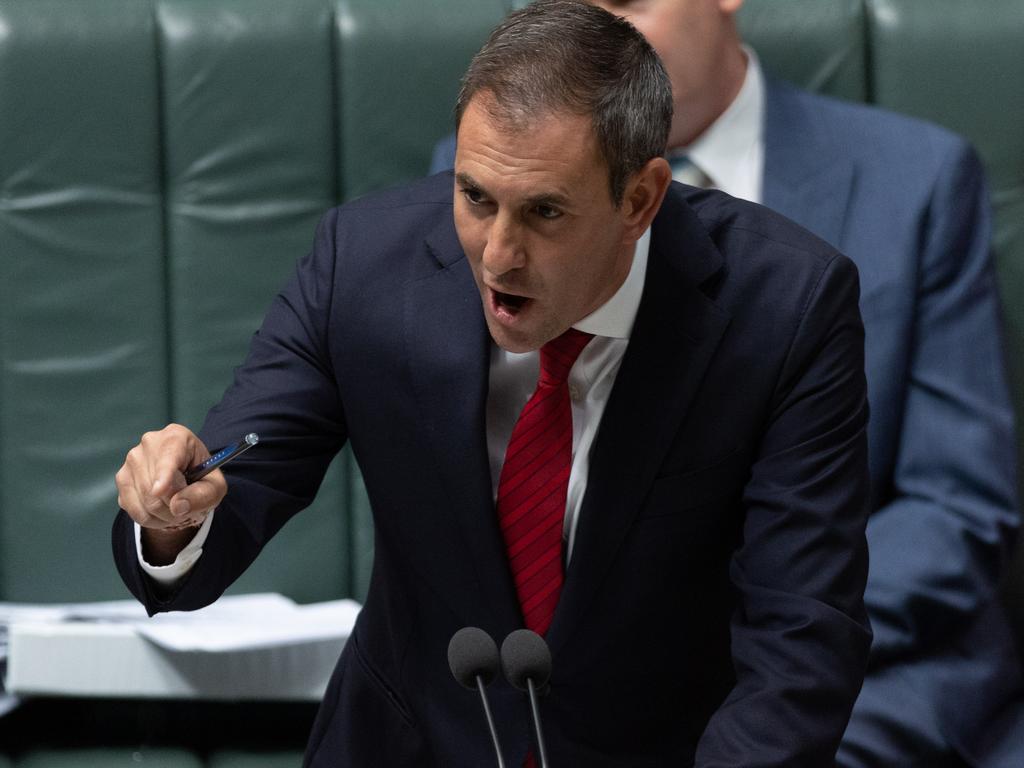Federal budget: Slowest global growth in two decades and banking fears to hit Australia
The collapse of several US regional banks has created greater uncertainty to the outlook for the world economy as Jim Chalmers warns global growth will be the slowest this century.

Business
Don't miss out on the headlines from Business. Followed categories will be added to My News.
The full effect of aggressive interest rate increases by central banks has yet to flow through the global economy as Australia’s Treasury forecasts the weakest growth in two decades amid ructions in the international banking system.
Treasurer Jim Chalmers warned that outside of the pandemic and the global financial crisis, the next two years were expected to be the weakest for global growth in over two decades.
Global growth is expected to slow from 3.4 per cent in 2022 to 2.75 per cent in 2023, the budget shows. A modest pick-up to 3 per cent is then expected in 2024, as inflation and financial conditions begin to ease.
“This will affect us here in Australia,” he said.
“Our economic growth is expected to slow from 3.25 per cent in 2022–23 to 1.5 per cent the year after, before recovering to 2.25 per cent in the next.”
The collapse of several banks in the US over the past two months has added uncertainty to the outlook, particularly in the US and Europe.
Treasury expects the potential for further disruption as the economy and financial sector continue to adjust to higher interest rates.
“Swift and co-ordinated regulatory responses have helped to avert a broader systemic financial shock, allowing financial markets to stabilise. Nevertheless, stresses have exposed vulnerabilities in parts of the global banking system, heightened investor risk aversion and generated tighter financial conditions for households and firms.”
The international outlook remained highly uncertain, with the balance of risks firmly tilted to the downside according to Treasury.

“There remains an elevated risk of recession across major advanced economies. An immediate and potentially significant downside risk to the global economy is an escalation of the recent banking sector stress,” the budget said.
“Most central banks have acknowledged the tightening in financial conditions due to the recent bank failures may limit the extent of further increases in policy rates.”
Treasury said that while headline inflation is expected to continue to fall from recent peaks, core inflation may remain more persistent than anticipated.
Treasury warned energy and food markets remained vulnerable to extreme weather events, which have become more common, and to an escalation of Russia’s invasion of Ukraine. “Either event could require tighter monetary policy and a larger increase in unemployment if the associated higher prices flow through to core inflation or increase inflation expectations,” Treasury said.
The failure of First Republic and subsequent sale to JPMorgan Chase last week marked the latest fallout from the banking industry turmoil that began in March.
The San Francisco-based lender had been in turmoil since the March bankruptcies of regional banks Silicon Valley Bank and Signature Bank sparked fears of contagion. The collapses led to a snowball effect as concerned investors looked for signs of weakness in the broader banking sector.
Swiss banking giant Credit Suisse became the highest-profile casualty when it was pushed by regulators to merge with its rival, UBS.
The latest concerns in the US have centred on PacWest Bancorp, which has seen its shares tumble and announced a strategic review to assess options, including a sale.
“Sentiment among investors and deposit holders also remains fragile and commercial real estate exposure is seen as another potential source of vulnerability, especially among small banks who hold the majority of outstanding commercial real estate loans in the US,” Treasury notes.
A dumping of financial stocks recently has seen the S&P 500 financials index on the verge of falling below its 2007 peak. After the 2008 financial crisis it took over a decade for the index to recover the ground it lost and has traded above its 2007 high since January 2021.
Treasury said that financial conditions could deteriorate once again if markets become concerned about the health of financial institutions.
“The rapid rise in interest rates could also lead to a sharper slowdown in investment and consumer spending (and therefore growth) than currently anticipated,” budget papers said.
“This outcome would be further compounded if inflation in advanced economies proves more persistent, requiring a more sustained tightening in monetary policy than currently expected.”
The budget economic outlook incorporated a moderate tightening in global financial conditions arising from recent instability in the global banking system. It also modelled the impact of an escalation of global financial sector stress on the global and Australian economies, which assumed further failure of small financial institutions internationally.
The budget forecasts the US economy to grow by 1 per cent this year before dropping to 0.75 per cent in 2024 and rebounding to 2.25 per cent in 2025.
“The cumulative effects of monetary policy tightening and tighter credit conditions due to banking sector stresses are expected to see US growth slow sharply over the remainder of 2023, with a recession remaining a risk,” Treasury notes.
More Coverage
Originally published as Federal budget: Slowest global growth in two decades and banking fears to hit Australia





